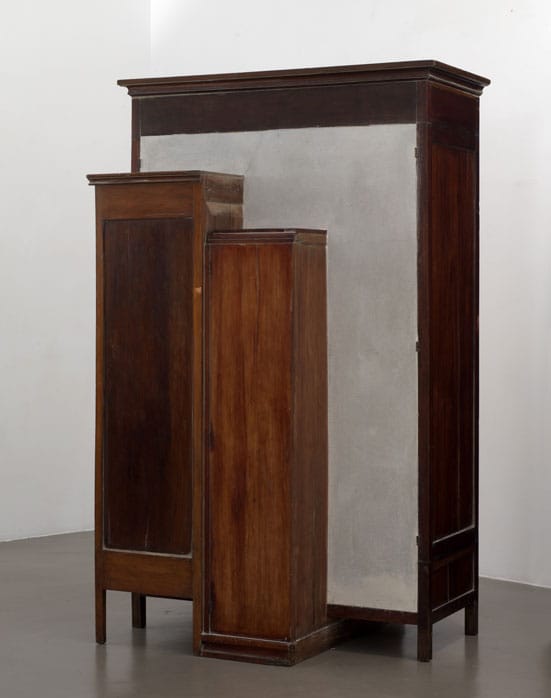15th September 2007 — 20th October 2007
In November 1985, a group of thirty-five rebels from the leftist
guerrilla group M-19 led a violent seizure of the Supreme Court of
Colombia in Bogota. Three hundred people, including justices and
judges, were held hostage, some for more than two days, before the
state militia brought the episode to a close in a bloody
confrontation. Seventeen years later, as an act of commemoration,
Doris Salcedo enacted a performance entitled Noviembre 6 y 7 (2002) to
mark the anniversary of this assault. Over the course of fifty-three
hours (the duration of the siege) she lowered wooden chairs from
various points on the roof of the new Palace of Justice creating an
"act of memory" to those who lost their lives.
Salcedo's work, mostly sculptural in form, draws on the experiences of
people who have suffered oppression and loss. The materials that she
works with are everyday objects, most often furniture and clothing,
are imbued with the history of their owners. As I walk through the
pieces on show at White Cube's space I find myself looking for clues
to the lives of those people who used the wardrobes and chairs from
which the sculptures are made. On the back of one, the letters JMTH
have been scrawled in red paint. This is the only significant trace to
be found and it does not tell of much. Yet there is a very strong
sense of the personal histories behind these objects and the way in
which Salcedo has fused them together evokes a strong feeling of the
familial and domestic. The relationship between objects mirrors the
relationships between family members.
Salcedo uses concrete to fill in the voids of the objects she uses.
Spaces that once housed clothing are now replete with the deadening
neutrality of it. Whilst the furniture speaks of lives lived, the
perfectly smooth, flat surface of the concrete alludes to suffocation,
loss and death. It is impenetrable, as if hiding dark secrets. In some
pieces items of clothing protrude from the surface of this grey mass
in the way that the khakis of a half-buried soldier might appear
through the mud of a battlefield. In one piece what appears to be a
wedding dress comprising floral netting peers through from the abyss.
On the side of one wardrobe the concrete has become visible through a
crack in the wood. There is a sense of the weight of these
constructions, both physically and metaphorically.
As visual forms these sculptures are immensely forceful. Salcedo
interlocks pieces of furniture so that two small wardrobes will cut
right angles through a larger one, or a chair will sit inside a
cupboard with its front legs forcing their way through to the
exterior. The objects merge with a harmony that is consistent
throughout. It would be facile to draw a comparison with the work of
Rachael Whiteread although there is a similarity in the artists'
articulation of negative space. Where Whiteread depicts only what
remains once the object has gone, Salcedo leaves us with both the
positive form and its negative counterpart. Paradoxically the ghost
coexists with its living self. These pieces are not then solely about
loss but offer the hope of renewal as well.
Moving to the smaller space upstairs there are four pieces from a
series of work entitled Atrabiliarios. Produced between 1992 and 1996
they present the shoes of people whose lives have been directly
affected by Colombia's turbulent past. As with the clothes in the
pieces downstairs, these everyday objects are highly charged. This is
reinforced through their imprisonment behind a skein of taught cow
bladder, the yellowing membrane partially obscuring the object behind.
The shoes sit in small rectangular caves carved from the gallery wall,
some in pairs others on their own. Again there is a strong sense of
suffocation. It is tempting at first to examine this work up close,
scrutinizing the texture of the bladder and the stitches that hold it
in place. Standing back, the forms of the objects become more
prominent and we wonder to whom these things belonged and what their
stories were - whether in fact they are still alive.
The exhibition at White Cube has been organised to coincide with
Salcedo's installation in Tate Modern's turbine Hall, which opens on
9th October.
AJL
White Cube - Hoxton Square
48 Hoxton Square
London N1 6PB
http://www.whitecube.com/
Open
Tuesday-Saturday, 10am-6pm
